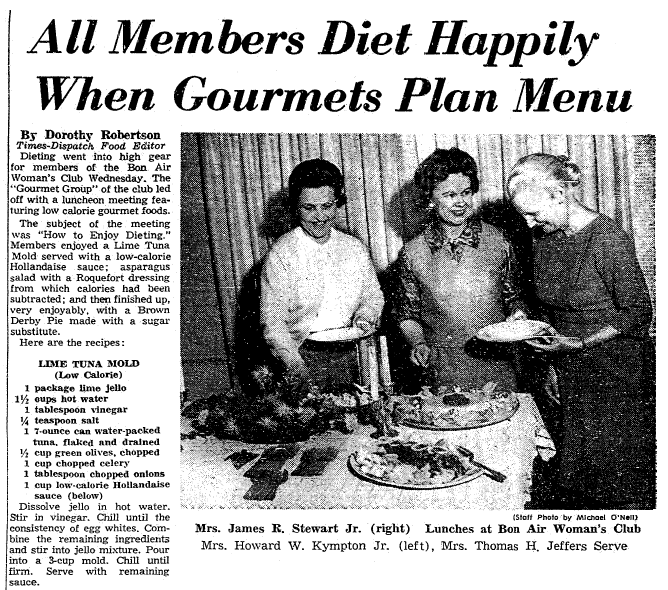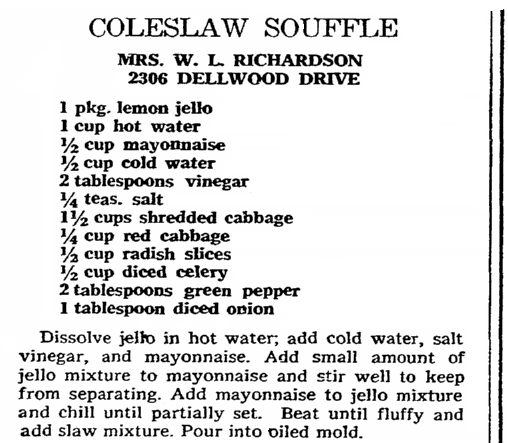Introduction: Gena Philibert-Ortega is a genealogist and author of the book “From the Family Kitchen.” In this blog article, Gena searches old newspapers to find recipes that were common in our ancestors’ time – but seem a little “scary” to a modern audience.
Do you have any scary recipes in your family? No, I don’t mean that Halloween dessert decorated with ghosts and bats, but truly scary family recipes that you are afraid someone in the family will serve at Thanksgiving or your grandmother served 50 years ago. These old family recipes are scary because of their ingredients or method of preparation. I know there are a few from my childhood I hope to never be served again.
So what about your family and ancestors? What scary old recipes did they have in their recipe box? GenealogyBank’s Historical Newspaper Archives are for more than just looking up biographical information about your ancestors – you can also find stories about their lives and the times they lived in, including popular and not-so-popular family recipes. Consider some of these old recipes that may have been too familiar in your family tree.
Old Jello Recipes
Ok, I come from a family that loved to make all kinds of Jello desserts. But there was a time that Jello was popular in savory dishes as well. You might be familiar with the more interesting gelatin luncheon dishes made popular in the 1950s, but those types of recipes also existed in previous decades.
This newspaper article, titled “All Members Diet Happily When Gourmets Plan Menu,” seems a bit misleading to me. While this Lime Tuna Mold is low calorie, I don’t know if I believe that the members of this group enjoyed eating this dish that is a combination of gelatin, tuna, green olives, celery, onions and a Hollandaise Sauce.

A 1970s-era recipe for Coleslaw Souffle isn’t as scary as jellified tuna but I had to include it here because it provides the name of the submitter and her street address. What a great family history find!

This 1923 recipe starts off like many familiar gelatin desserts – but its inclusion of Thousand Island dressing and whipped cream seems pretty scary to me.
Regional American Delicacies
Today, most people are far removed from the source of their food. Meat production is something most of us would rather not think about. And it would seem that many in today’s world have strong opinions about what types of meat they will eat and what they won’t.
[search_box]
Scrapple
It wasn’t too long ago that recipes were very explicit about how to prepare certain meals. What makes some modern-day cooks squeamish was once everyday knowledge. Case in point: this 1908 recipe for Scrapple, a.k.a. Pon Haus. This dish may possibly be the first pork recipe invented in America – and today, November 9th, is National Scrapple Day. For those not familiar with this dish, it’s a combination of pork scraps, corn meal, flour and spices. It is a food that is more familiar to those in the Mid-Atlantic region of the United States due to its Pennsylvania Dutch roots. (To learn more, including photos and modern-day recipes, Google the word “Scrapple.”)
Scrapple is one of those dishes that harkens to a time when meat/food was not wasted. Scrapple allows the maker to take advantage of all parts of the butchered hog, as this recipe from the column “Womanly Answers to Womanly Questions” explains.
Turtle Soup
While still consumed in certain parts of the country (especially in New Orleans), turtle soup was much more popular in the 19th century. Some recipes I’ve seen from the 1800s go into great length about how to dispatch the turtle prior to cooking. The following recipe from 1896 doesn’t go into great detail about killing the turtle – but is probably just enough to border on scary for modern audiences. Note the use of calves’ heads in the recipe. Calves’ heads are usually the main ingredient in mock turtle soup.
Tip: If you ever visit New Orleans, turtle soup is still served at a variety of fine restaurants including Commander’s Palace, Pascal’s and Upperline. It’s actually quite tasty.
Squirrel Recipes
What constitutes a scary ingredient for some people is not that out of the ordinary for others. Some foods are strongly tied to a specific region. Probably the most argued about ingredient is meat. One example is squirrel. If I were to talk about eating squirrel in Southern California most people would think I was joking, but in some parts of the country and for our ancestors, it was just another protein source.
In case you need some squirrel recipe ideas, here are three from a 1900 newspaper. It’s pointed out in this set of recipes, Squirrel Pot Pie, Squirrel Pie and Baked Squirrel, that rabbit could be substituted for squirrel.
The Scary Price of Beauty
Multiple articles could be written about some of the scary recipes and products sold to our families in the name of cures and beauty aids. Cookbooks from the early 19th century included sections on remedies because the housewife had to know not only how to nourish her family, but how to heal them in the event of sickness. Other types of recipes like those for household cleaners and personal care could also be found.
In this 1906 example, milk baths are touted for a fine complexion. To take advantage of this, the article gives instructions that women should first clean their face with wadding soaked with a mixture of olive oil, cognac oil and cologne. Then the milk bath should be applied and allowed to dry so that you can rub raw potato or cucumbers on your face. Now so far that’s not too out of the ordinary. Some people swear by using olive oil on their skin. But it’s the warning that I find a little scary: “Women sometimes find that the milk seems to burn the face at first, but they must persevere and the good effect will soon be perceived.” You should also drink a lot of milk during the day and continue these treatments for a “long time” in order for it to work. But because this idea is said to come from Paris, it must work.
What Are the Scary Recipes in Your Family History?
Scary recipes are an important part of family history. What makes family history interesting to everyone, not just those genealogy-obsessed, are the stories. Knowing more about the times our ancestors lived in and the food they ate help make their lives more relevant to us; it places them in context. It also can drive home important aspects of their lives. Eating foods not familiar to us today, eating almost everything, and combining unique flavors speaks to what was available, not wasting resources, frugality, and trying to make food interesting with what was available. Social history, the study of the everyday lives of people, makes family history something that will interest even the non-genealogists in your family.
What scary recipes did your family eat? Start searching for them today in GenealogyBank’s Historical Newspaper Archives – and tell us about them in the comments section.
Share Your Recipes with Us!
GenealogyBank has a shared Pinterest board where you can share your old family recipes. If you have a family recipe you’d like to share, send us a Pinterest group board request and you can pin your recipe on our board to share with the community.
Related Recipe Articles and Resources:
- Find Grandma’s Recipes in Old Newspaper Food Columns
- State Fair Food Fare: Strange Eats & Award-Winning Recipes
- Old Halloween Recipes from Our Ancestors’ Kitchens
- What’s Your Favorite Pumpkin Pie Recipe? Share It with Us!
- Old Fashioned Family Recipes (GenealogyBank Pinterest Board)
[bottom_post_ad]